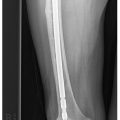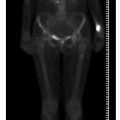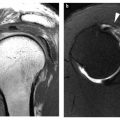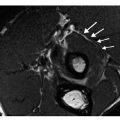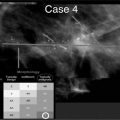J. Hodler, G. K. von Schulthess and Ch. L. Zollikofer (eds.)Musculoskeletal Diseases 2013–2016Diagnostic Imaging and Interventional Techniques10.1007/978-88-470-5292-5_4
© Springer-Verlag Italia 2013
Wrist and Hand
Louis A. Gilula1
(1)
Mallinckrodt Institute of Radiology, Barnes Jewish Hospital, Washington University, MO, USA
Abstract
This course will emphasize the general principles for approaching a variety of lesions of the hand and wrist. An approach to analysis of wrist and hand bones will be provided, followed by applications of these principles with respect to trauma, infection, neoplasia, arthritis and metabolic bone disease. Obviously it is impossible to cover all of musculoskeletal imaging and pathology in a short course such as this; however, some major points will be emphasized in each of these different areas, with most emphasis placed on complex carpal trauma.
Introduction
This course will emphasize the general principles for approaching a variety of lesions of the hand and wrist. An approach to analysis of wrist and hand bones will be provided, followed by applications of these principles with respect to trauma, infection, neoplasia, arthritis and metabolic bone disease. Obviously it is impossible to cover all of musculoskeletal imaging and pathology in a short course such as this; however, some major points will be emphasized in each of these different areas, with most emphasis placed on complex carpal trauma.
Overview of Analysis
As described by Debbie Forrester [1], looking at any part of the musculoskeletal system can be divided into the A, B, C, D’S, starting with S. „S” stands for soft tissues, „A” is for alignment, „B” is bone mineralization, „C” is cortex, cartilage and joint space abnormalities, and „D” is distribution of abnormalities. Utilizing these principles will help keep one from missing major observations. Starting with „S” for soft tissues will keep one from forgetting to evaluate soft tissues. Recognizing soft tissue abnormalities will point to an area of abnormality and should alert one to look a second or third time at the center of the area of soft tissue swelling to see if there is an underlying abnormality. The soft tissues dorsally over the carpal bones are normally concave. When the soft tissues over the dorsum of the wrist are straight or convex, swelling is suspected. The pronator fat line lying volar to the distal radius suggests deep swelling. When this fat line is convex outward, when normally it should be straight or concave [2], deep swelling should be suspected. Soft tissue swelling along the radial and ulnar styloid processes may be seen with synovitis or trauma. Swelling along the radial or ulnar side of a finger joint can be suspect for collateral ligament injury. Exceptions to this exist along the radial side of the index finger and the ulnar side of the small finger. Focal swelling circumferentially around one interphalangeal or metacarpophalangeal joint is highly suspect for capsular or joint swelling. Tenosynovitis can be another cause of diffuse swelling along one side of the wrist or finger.
„A” stands for alignment. Evaluation of alignment is utilized to recognize deviations from normal. Angular deformities are commonly seen with arthritis. Dislocations and carpal instabilities can be recognized with abnormalities in alignment. „B” stands for bone mineralization. One can see different types of bone mineralization. Acute bone demineralization can be recognized with subcortical bone loss in the metaphyseal areas and ends of bones, in areas of increased vascularity of bones. This is typified by the young person who has an injured part of the body placed in a cast, with development of rapid demineralization. Diffuse, even demineralization is that which commonly develops over longer periods of time and may be seen in older people with diffuse osteopenia of age and also from prolonged disuse. Focal osteopenia, especially associated with cortical loss, raises the question of infection or a more acute inflammatory process in that area of local bone demineralization. Representing cartilage space and cortex, „C” reminds us to look at all of the joint spaces and also the margins of these joints and bones for cartilage space narrowing, erosions and other cortical abnormalities. „D” refers to distribution of abnormalities. This is most vividly exemplified by the distribution of erosions, as classically might be seen distally in psoriasis and more proximally in rheumatoid arthritis.
Three major concepts in the wrist relate to alignment and can be especially applied to the carpal bones. These three concepts are „parallelism”, „overlapping articular surfaces” and „three carpal arcs” [3–5]. The first two concepts are applicable through the entire body. The concept of parallelism is valuable throughout the body, and refers to the fact that any anatomic structure that normally articulates with an adjacent anatomic structure should show parallelism between the articular cortices of those adjacent bones. This relates to exactly how jigsaw puzzles work. If there is a piece of a jigsaw puzzle out of place, you could see that piece losing its „parallelism” to adjacent pieces. In that situation there would be „overlapping articular surfaces”. Therefore the concept of parallelism and overlapping articular surfaces are related. If there is overlapping of normally articulating surfaces, there should be dislocation or subluxation at the site of those overlapping surfaces. This does not apply if one bone is foreshortened or bent, as with overlapping phalanges on a posteroanterior view of a flexed finger. In that situation, one phalanx would overlap the adjacent phalanx, but in that flexed posteroanterior position one would not normally see parallel articular surfaces at that joint.
The last concept is that of three normal carpal arcs. Three carpal arcs can be drawn in any normal wrist where the wrist and hand are in neutral position. Neutral position is the situation when the third metacarpal and the radius are coaxial. Arc I is a smooth curve along the proximal convex surfaces of the scaphoid, lunate and triquetrum. Arc II is a smooth arc drawn along the distal concave surfaces of these same three carpal bones. Arc III is a smooth arc that is drawn along the proximal convex surfaces of the capitate and hamate [3, 6]. When one of these arcs is broken at a joint or at a bone surface, this indicates that there should be something wrong with that joint, such as disruption of ligaments, or when at a bone, a fracture. Two normal exceptions to the descriptions of these arcs exist. In arc I, the proximal-distal dimension of the triquetrum along its radial surface may be shorter than the opposing portion of the lunate. A broken arc I at the lunotriquetral joint is a congenital variation when this situation arises. Another congenital variation exists where there is a prominent articular surface of the lunate that articulates with the hamate, a type II lunate. (A type I lunate is the lunate with one distal smooth concave surface. A type II lunate has one concave articular surface that articulates with the capitate and a second concavity, the hamate facet of the lunate, which articulates with the proximal pole of the hamate.) When there is a type II lunate, arc II may be broken at the distal surface of the lunate where there is a normal concavity at the lunate hamate joint. Similarly, there can be a slight jog of arc III at the joint between the capitate and hamate in the type of wrist with a type II lunate; however, the overall outer curvatures of the capitate and hamate are still smooth. At the proximal margins of the scapholunate and lunotriquetral joints, these joints may be wider as a result of curvature of these bones. Observe the outer curvature of these carpal bones when analyzing the carpal arcs. Also, for analysis of the scapholunate joint space width, look at the middle of the joint between parallel surfaces of the scaphoid and lunate to see if there is any scapholunate space widening when compared with a normal capitolunate joint width in that same wrist.
Stay updated, free articles. Join our Telegram channel

Full access? Get Clinical Tree


